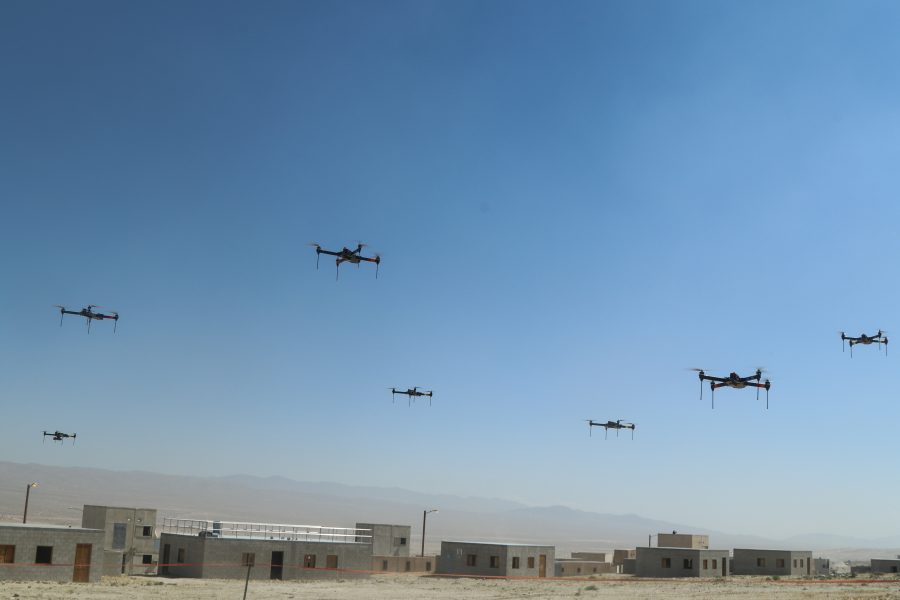The U.S. needs a better-coordinated approach to defend against unmanned aerial systems but is at the mercy of local politics on the issue, Air Force Vice Chief of Staff Gen. James C. Slife told lawmakers May 1.
Asked by Sen. Dan Sullivan (R-Alaska) how satisfied he is with the degree of coordination between the FBI, Department of Homeland Security, other government agencies, and the military services on counter-UAS capabilities, Slife was direct in his response: “Not satisfied.”
“Although the services coordinate effectively together, and leverage each other’s capabilities, every single locale has its own story,” Slife added. “And so, there is no national approach to counter this small UAS issue. It is local issue by local issue.”
Air Force officials have been extremely tight-lipped about what they’re doing to thwart drone operators who fly their small craft near or over domestic Air Force bases, where they could conceivably fly drones into the path of aircraft, conduct surveillance, or cause other problems. In March, for example, The War Zone reported that unidentified drones repeatedly swarmed Joint Base Langley-Eustis in Virginia over the span of several months.
Officials have said a menu of counter-UAS capabilities have been developed, to include RF jamming guns and other devices that cause the drones to lose contact with their operators and land vertically. A series of ad-hoc ordinances have sprung up in some locales but not others, preventing a uniform approach to airbase security.
“We’ve been having some testimony and some hearings—some open, some classified—about UAS challenges,” Sullivan said. “Obviously, they’re a threat in combat, but increasingly, they’re also a threat to our installations both at home and overseas. Addressing this threat requires an awful lot of coordination. … I worry a little bit that we’re maybe not really coordinating.”
Asked by Sullvian, Slife noted that he and William LaPlante, undersecretary for acquisition and sustainment, are leading the Pentagon counter-UAS effort.
Together, they co-chair a panel and a “Tiger Team” that reports to Defense Secretary Lloyd J. Austin III on UAS defense, and there are “a couple other forums that do this. And all the services are part of that forum that [LaPlante] and I co-chair.”
Last week, LaPlante said during a Center for Strategic and International Studies event that counter-UAS needs urgent attention, given the increasing role of drones in state-on-state conflict. Drones are a cost-imposing tactic on defenders, and he said the U.S. spends up to $100,000 to destroy just one uncrewed air vehicle, which can be launched in large swarms.
When the U.S. helped Israel shoot down some 300 drones and ballistic missiles in April, it used air-to-air missiles, ground-fired Patriot interceptors, and ship-fired Standard missiles, among other weapons, all of which have a price tag likely higher than the targets they were intercepting.
It’s “getting too expensive” to deal with attacking drones that way, LaPlante said. The Pentagon needs counter-UAS weapons that can be successful at less than $10,000 per round, he said.
On the same panel, undersecretary of research and engineering Heidi Shyu said her organization, in concert with DARPA, the Army, and the Navy, is pursuing high-powered microwaves, lasers, and other directed-energy solutions to address the lopsided cost of missile and UAV defense.
